In the fast-paced world of infrastructure development and facility management across New Zealand, thermoplastic line marking has emerged as the gold standard for durable, highly visible pavement markings.
Whether you’re managing a busy Auckland car park, overseeing warehouse operations in Hamilton, or maintaining school safety zones in Tauranga, understanding the benefits of thermoplastic road marking can transform your approach to safety and compliance.
At Line Marking Pros, we’ve witnessed firsthand how thermoplastic road marking solutions revolutionize the way businesses and organizations approach their marking needs across the upper North Island.
After five years of delivering precision marking services, we’ve seen thermoplastic materials consistently outperform traditional alternatives in durability, safety, and long-term value.
What is Thermoplastic Line Marking?
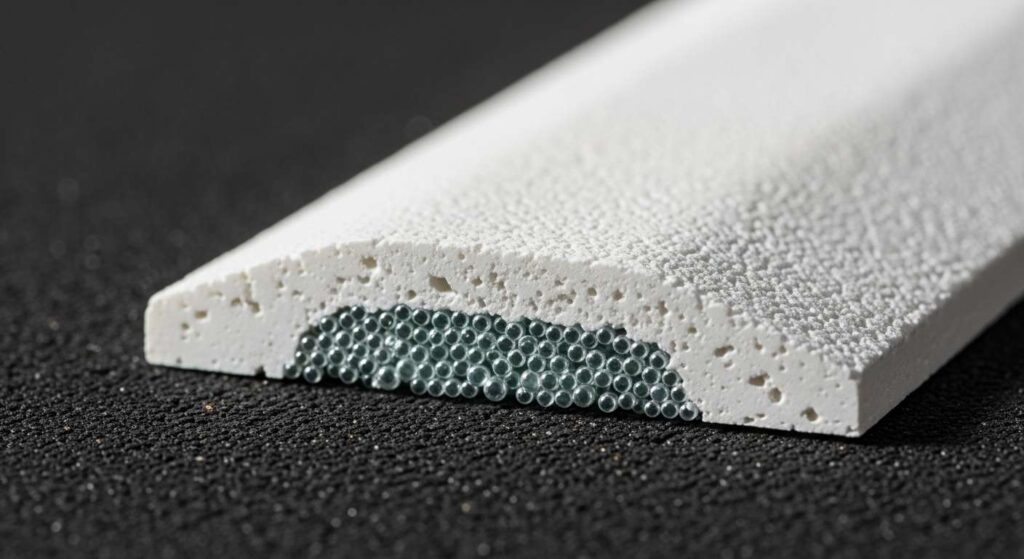
Thermoplastic line marking represents a significant advancement in pavement marking technology. Unlike traditional paint-based systems, thermoplastic marking utilizes a specialized blend of synthetic resins, pigments, glass beads, and performance additives that transforms from solid to liquid when heated to approximately 180-220°C (356-428°F).
The key differentiator lies in its 100% solids composition—thermoplastic markings contain no solvents that evaporate during application. When applied in its molten state, the thermoplastic material bonds molecularly with the road surface, creating markings that significantly outperform conventional alternatives in terms of durability and visibility.
Composition of Thermoplastic Road Marking Materials
Thermoplastic road marking materials typically contain several critical components:
- Binder resins: Petroleum-derived compounds providing structural integrity and adhesion
- Pigments: UV-stable colorants ensuring long-lasting visibility
- Glass beads: Both intermixed and drop-on varieties delivering exceptional retroreflectivity
- Fillers: Materials like calcium carbonate adding bulk and improving texture
- Performance additives: Specialized compounds enhancing durability and application characteristics
This sophisticated composition enables thermoplastic markings to deliver superior performance compared to traditional paint systems across diverse applications.
Superior Benefits of Thermoplastic Line Marking
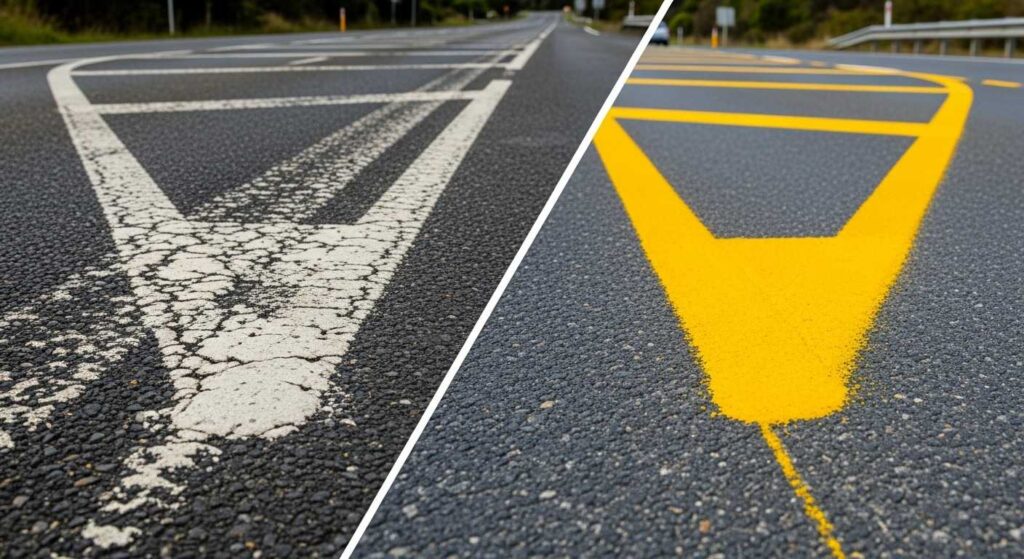
Exceptional Durability and Longevity
One of the most compelling benefits of thermoplastic line marking is its remarkable durability. Research consistently demonstrates that thermoplastic road markings last 3-5 years under normal traffic conditions, with some installations extending up to 8 years in favorable environments. This represents a substantial improvement over traditional paints, which typically require replacement within 6 months to 2 years.
The extended lifespan results from the material’s robust composition and unique application method. When heated, the thermoplastic material melts into the top layers of the pavement surface, creating a tenacious bond that resists wear, weathering, and chemical exposure. This superior adhesion is particularly evident in New Zealand’s challenging climate conditions.
Enhanced Safety and Visibility Features
Thermoplastic line marking provides superior safety benefits through multiple mechanisms. The incorporation of glass beads throughout the material creates exceptional retroreflectivity, making markings highly visible during nighttime conditions and adverse weather. This reflective quality is maintained throughout the marking’s lifespan as embedded glass beads become exposed through normal wear.
For pedestrian safety applications, thermoplastic markings offer inherent slip resistance properties enhanced by glass bead texture. This makes them ideal for crosswalks, pedestrian crossings, and areas where foot traffic intersects with vehicle movements. Additionally, thermoplastic markings can be applied in multiple layers to create rumble strips that provide both audible and tactile feedback to alert drivers of hazardous conditions.
Cost-Effective Long-Term Solution
While thermoplastic road marking requires higher initial investment compared to paint alternatives, the extended lifespan and reduced need for frequent maintenance deliver significant long-term cost savings. The material’s durability can reduce maintenance needs by more than 50% compared to traditional striping, as thermoplastic markings can last 4-6 times longer than conventional paint systems.
Life cycle cost analyses consistently demonstrate that thermoplastic provides better value, particularly in high-traffic environments where frequent reapplication of paint-based markings would otherwise be required. The reduced frequency of maintenance activities also minimizes disruption to traffic and associated indirect costs.
Rapid Application and Traffic Reopening
Thermoplastic markings offer significant operational advantages through their rapid application and curing characteristics. The material sets and hardens quickly upon cooling, typically allowing traffic to resume within 30 minutes to one hour after application. This fast turnaround time minimizes road closure duration and reduces traffic disruption compared to paint systems requiring longer curing periods.
Professional line marking equipment and tools enable consistent thickness control and uniform coverage during application. Standard application thickness ranges from 1.5-3.0mm, with 2.0mm being the recommended thickness for optimal performance and coverage.
Comprehensive Applications of Thermoplastic Line Marking
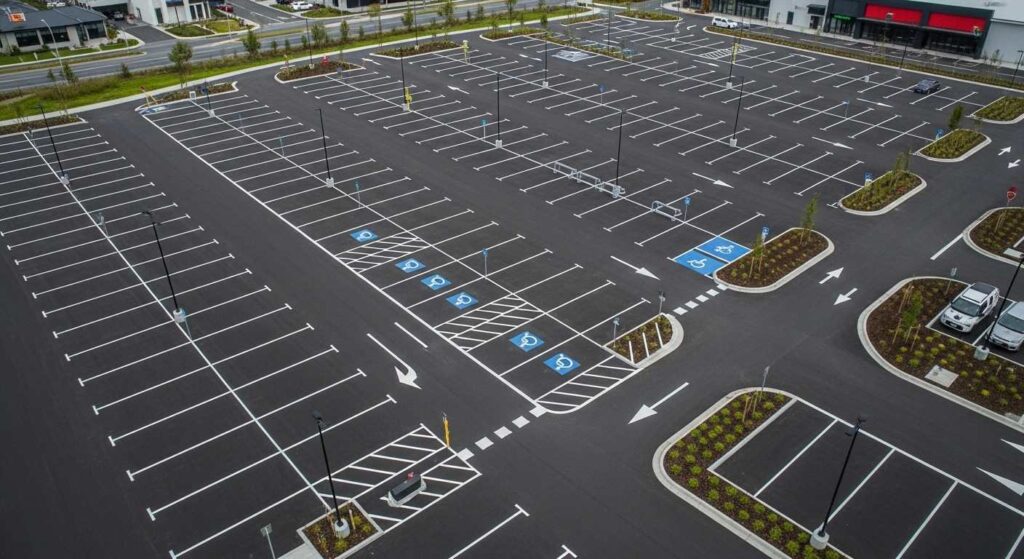
Road and Highway Infrastructure
Thermoplastic road marking is extensively used on highways, expressways, and major arterial roads where durability and visibility are paramount.
These high-traffic environments demand markings that can withstand continuous heavy vehicle loads while maintaining clear lane delineation and safety guidance.
Highway applications typically include centerlines, edge lines, lane dividers, and specialized markings such as rumble strips for enhanced driver alertness.
The material’s resistance to fuel, oil, and chemical spills makes it particularly suitable for demanding road environments where surface preparation is critical for long-term performance.
Car Park and Commercial Facilities
Car parks represent a major application area for thermoplastic line marking due to the material’s durability and professional appearance. The abrasion-resistant properties make it ideal for parking bay markings that experience frequent vehicle maneuvering and turning movements.
Commercial applications include standard parking spaces, disabled parking areas compliant with NZ accessibility standards, family parking zones, and increasingly, electric vehicle charging bay markings.
Our comprehensive New Zealand car park line marking services incorporate thermoplastic solutions for maximum durability and compliance.
Industrial and Warehouse Applications
Industrial facilities benefit significantly from thermoplastic markings due to their exceptional chemical resistance and ability to withstand heavy equipment loads.
Warehouse applications include traffic lane markings for forklifts and pedestrian areas, safety zone boundaries, and equipment placement markers.
The material’s resistance to oils, solvents, and industrial chemicals makes it ideal for manufacturing environments where traditional paint markings would deteriorate rapidly. Thermoplastic markings maintain their integrity and visibility even under exposure to harsh industrial conditions.
Educational and Recreational Facilities
Schools and recreational facilities require durable marking solutions that can withstand constant use while maintaining clear visibility for safety and supervision. Playground markings, sports court lines, and safety zone delineations benefit from thermoplastic’s longevity and weather resistance.
The material’s ability to accommodate custom designs and bright colors makes it valuable for creating engaging educational environments while maintaining the safety standards required in school settings.
Thermoplastic vs Traditional Paint: Performance Comparison
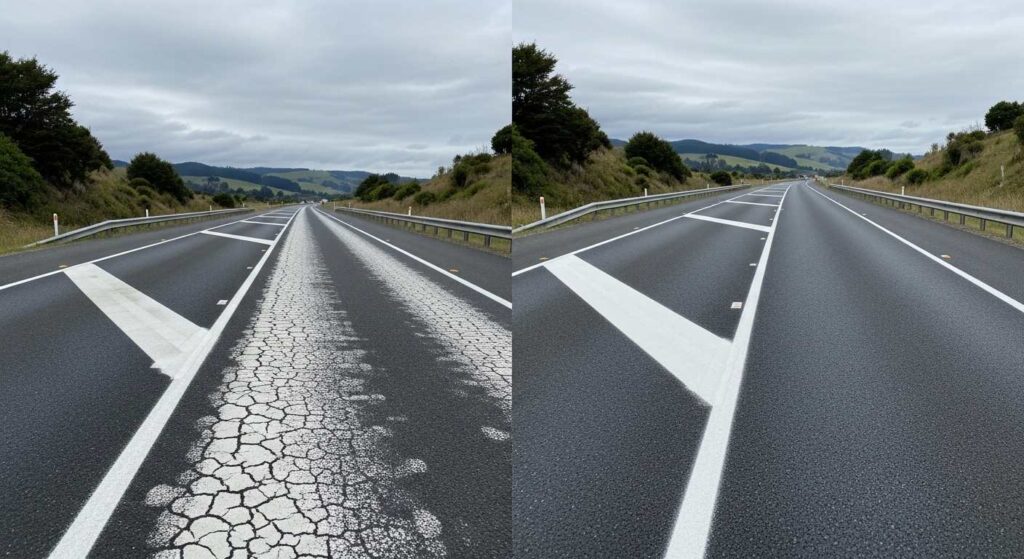
Durability Analysis
Direct comparisons between thermoplastic and paint markings reveal significant performance differences.
Thermoplastic markings typically last 5-7 years compared to 1-3 years for paint systems, representing up to 10 times longer service life in optimal conditions.
This superior durability stems from the material’s molecular bonding with the pavement surface rather than the surface-level adhesion of paint systems.
Visibility and Safety Performance
The superior reflectivity of thermoplastic markings, achieved through glass bead integration, provides better nighttime visibility than paint alternatives.
Research indicates that optimal retroreflectivity requires glass beads to be embedded approximately 60-65% into the thermoplastic matrix, ensuring consistent performance throughout the marking’s lifespan.
Environmental and Maintenance Considerations
Modern thermoplastic formulations offer several environmental benefits, containing no volatile organic compounds (VOCs) that contribute to air pollution. The materials are non-toxic and completely safe for environmental exposure, making them suitable for sensitive areas like schools and residential zones.
The reduced maintenance requirements of thermoplastic road markings translate to fewer traffic disruptions, reduced equipment usage, and lower overall environmental impact compared to frequent paint reapplication cycles.
New Zealand Compliance and Standards
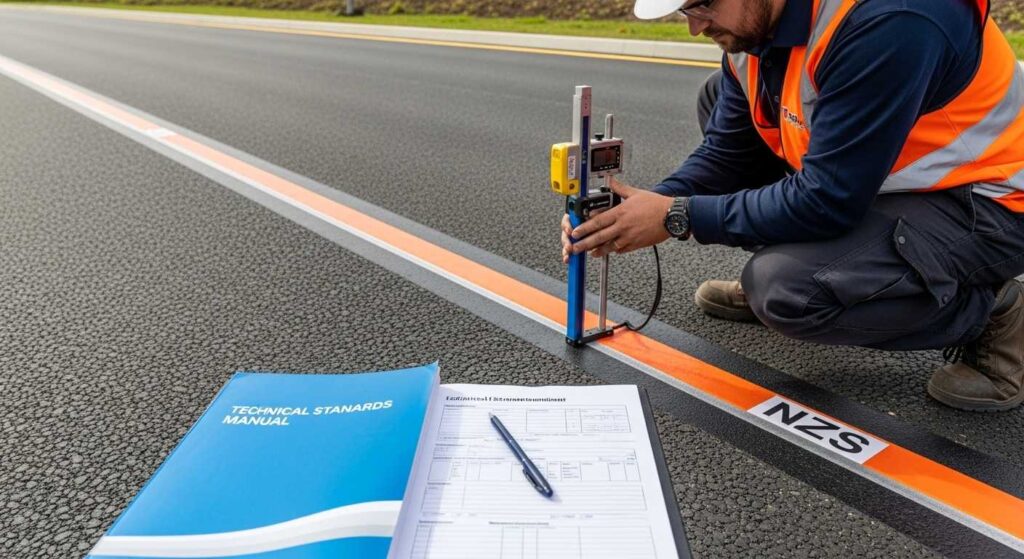
NZS 4121:2001 Accessibility Requirements
In New Zealand, line marking must comply with specific accessibility standards, particularly NZS 4121:2001 for disabled parking spaces and accessible routes.
Thermoplastic line marking excels in meeting these requirements due to its precise application capabilities and long-term durability that maintains compliance standards throughout its service life.
Our expertise in New Zealand line marking standards and compliance ensures all thermoplastic applications meet or exceed regulatory requirements while providing maximum durability and safety benefits.
Local Council and Regional Requirements
Regional councils throughout Auckland, Hamilton, Waikato, Tauranga, and Whangarei maintain specific requirements for pavement marking in public areas and commercial developments.
Thermoplastic road marking services must accommodate these varying local requirements while maintaining consistent quality and performance standards.
Professional Application and Quality Assurance
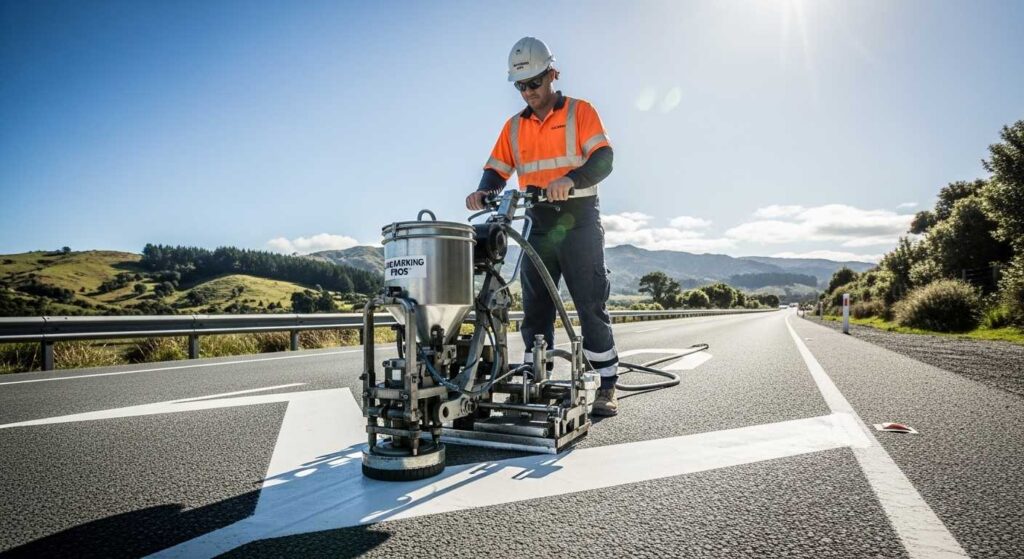
Advanced Application Technology
Professional thermoplastic road marking services utilize sophisticated equipment designed for accuracy and consistency.
Modern application machines can maintain uniform quality while applying markings efficiently, ensuring optimal performance characteristics and compliance with specification requirements.
The critical factors for successful thermoplastic application include proper surface preparation, correct application temperature, appropriate thickness control, and precise glass bead application rates.
Professional contractors understand these variables and maintain the equipment and expertise necessary for optimal results.
Quality Control and Performance Monitoring
High-quality thermoplastic applications require comprehensive quality control throughout the process. This includes surface condition evaluation, temperature monitoring during application, thickness verification, and post-application inspection to ensure all specifications are met.
Regular performance monitoring helps identify any issues early and ensures markings continue to meet safety and visibility requirements throughout their service life.
Service Excellence Across the Upper North Island
Regional Expertise and Coverage
Line Marking Pros delivers comprehensive thermoplastic line marking services across Auckland, Hamilton, Waikato, Tauranga, Whangarei, and the broader upper North Island.
Our regional expertise enables us to understand local conditions, requirements, and challenges that affect marketing performance and longevity.
Each region presents unique considerations—from Auckland’s high-traffic urban environments to Waikato’s rural and agricultural applications. Our experience across these diverse conditions ensures optimal material selection and application techniques for maximum performance in each specific environment.
Flexible Scheduling and Minimal Disruption
Understanding that our clients need to maintain operational continuity, we offer flexible scheduling options, including after-hours and weekend services. This approach minimizes disruption to business operations while ensuring the highest quality thermoplastic road marking installation.
Our commitment to convenience extends beyond scheduling to include comprehensive project management, clear communication, and efficient execution that respects your time and operational requirements.
Future Innovations in Thermoplastic Technology
Smart Marking Systems
Emerging technologies include smart marking systems incorporating LED integration and sensor-activated guidance capabilities. These innovations enhance visibility in challenging conditions and provide dynamic traffic management capabilities for complex facilities.
Sustainable Material Development
Recent innovations include bio-based and recycled content thermoplastics that reduce environmental impact while maintaining the performance standards expected from thermoplastic markings.
These sustainable formulations support circular economy principles while delivering the durability and safety benefits that make thermoplastic the popular choice for demanding applications.
Conclusion: Choose Excellence in Thermoplastic Line Marking
Thermoplastic line marking represents the pinnacle of pavement marking technology, delivering unmatched durability, safety, and long-term value.
Whether you need road marking services for public infrastructure, car park marking for commercial efficiency, or specialized industrial applications, choosing professional thermoplastic solutions ensures results that exceed New Zealand’s demanding standards.
The comprehensive benefits—from superior weather conditions resistance to exceptional cost-effective performance—make thermoplastic marking the intelligent choice for organizations prioritizing safety, compliance, and operational efficiency.
As we’ve demonstrated throughout our five years serving the upper North Island, the combination of advanced thermoplastic material technology and professional application expertise delivers results that truly stand the test of time.
At Line Marking Pros, we understand what it takes to deliver professional line marking solutions that meet New Zealand’s exacting standards while providing the durability and performance your facility demands.
Our commitment to safety compliance, precision application, and customer service excellence ensures your thermoplastic line marking project exceeds expectations while supporting your long-term operational goals.
Ready to experience the superior performance of professional thermoplastic line marking? Contact Line Marking Pros today for a comprehensive consultation and detailed quote.
Our experienced team will assess your specific requirements, recommend optimal thermoplastic solutions, and deliver precision results that enhance safety, compliance, and operational efficiency across Auckland, Hamilton, Waikato, Tauranga, Whangarei, and the broader upper North Island.
Don’t settle for temporary solutions when you can invest in lasting quality that meets New Zealand’s highest standards. Call 027 404 4550 or request your free, no-obligation quote online today.
FAQs
How does using thermoplastic road markings improve road safety?
Using thermoplastic road markings significantly improves road safety by providing highly reflective and durable markings that are applied quickly and easily. These markings create clear lane separations, stop bars, and crosswalks, helping to direct road users effectively. The reflective properties of thermoplastic materials enhance visibility, particularly in low-light conditions, making it easier for drivers and pedestrians to identify upcoming danger spots. This increased visibility contributes to a safer environment for all road users.
Why should I choose thermoplastic over traditional paint for marking lanes?
Choosing thermoplastic over traditional paint for marking lanes offers several advantages. Thermoplastic markings are more durable than paint, allowing them to endure heavy traffic and extreme weather conditions without fading or deteriorating. They also require less frequent maintenance, which reduces overall costs. Moreover, thermoplastic road marking paint can be applied quickly, minimizing road closure times. This makes thermoplastic a reliable choice for road marking services, especially in high-traffic areas where safety is a priority.
What types of pavement markings are commonly used for pedestrian crosswalks?
For pedestrian crosswalks, highly reflective thermoplastic markings are commonly used. These markings enhance visibility for both drivers and pedestrians, ensuring that crosswalks are easily identifiable. The use of glass beads in the thermoplastic paint increases reflection at night or in poor weather conditions, which is vital for road safety. Additionally, the durable nature of thermoplastic ensures that these important markings remain intact and visible for an extended period, reducing the need for frequent repairs or repainting.



